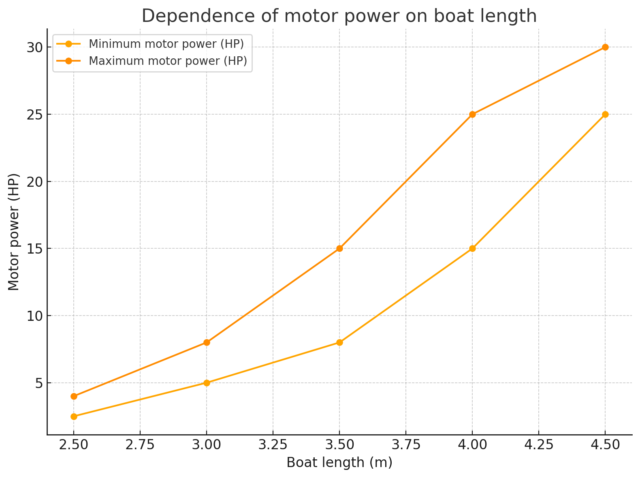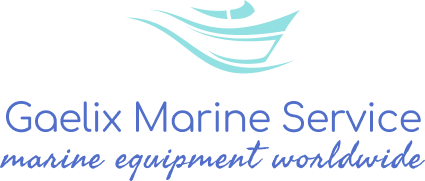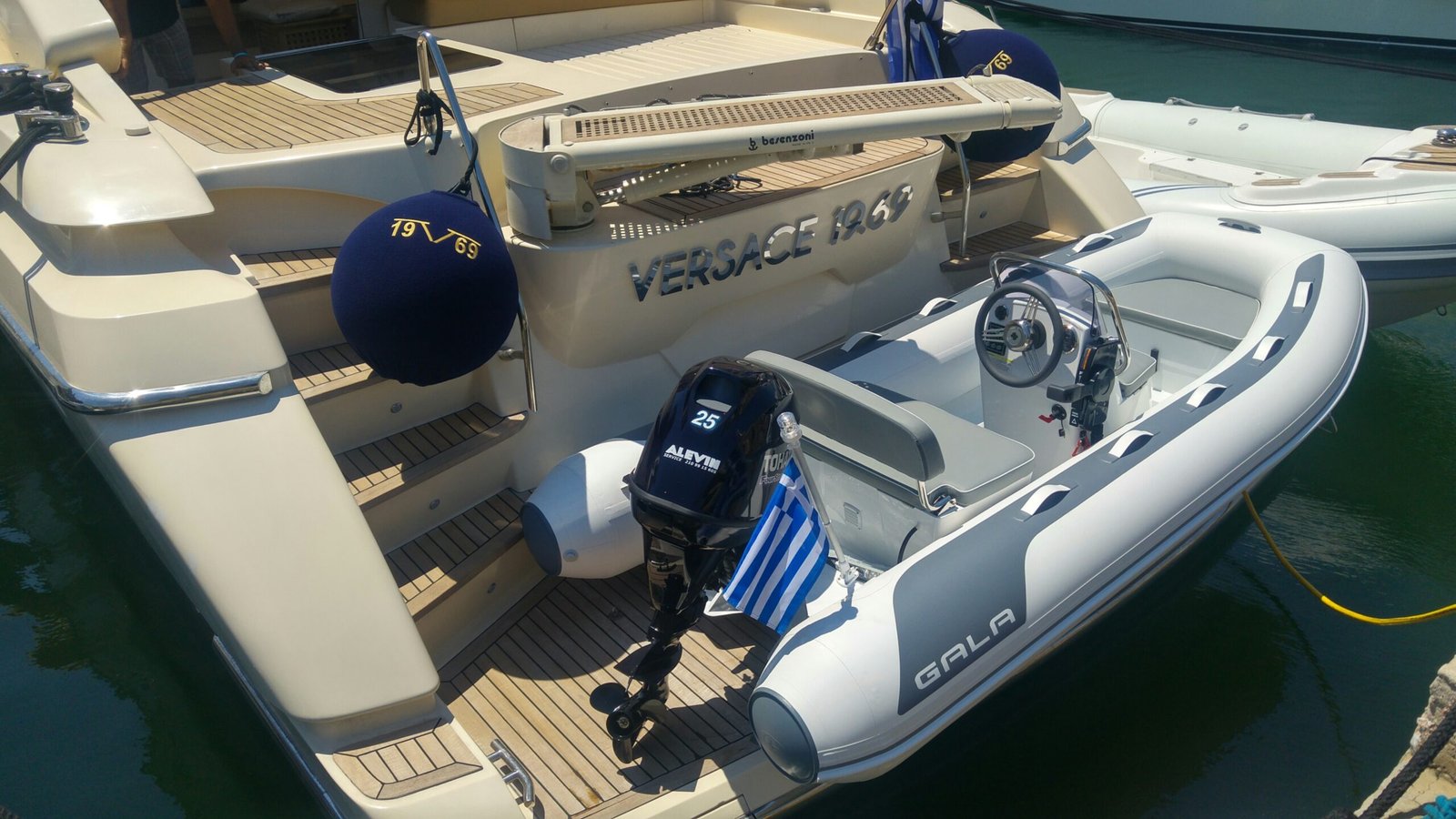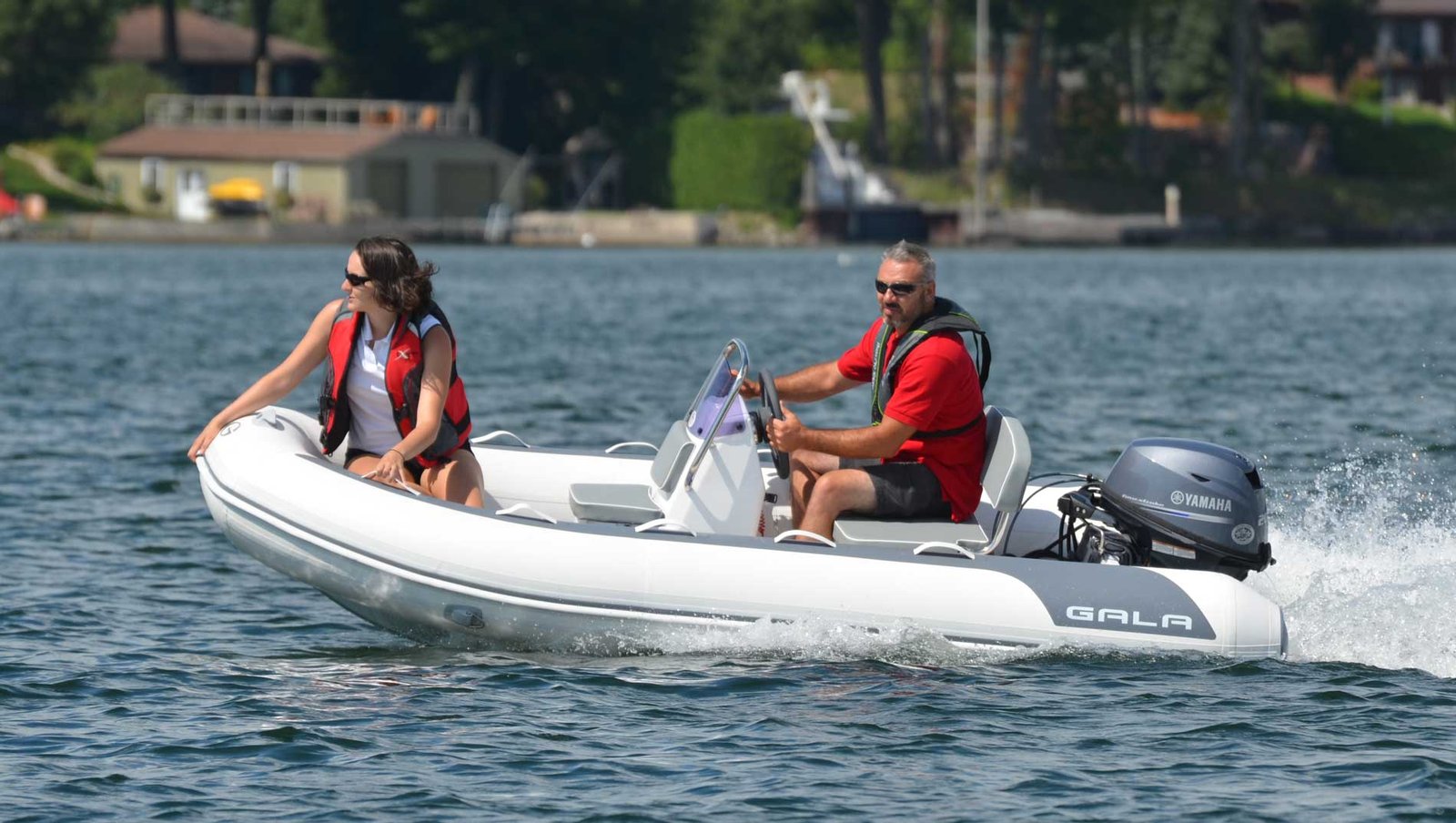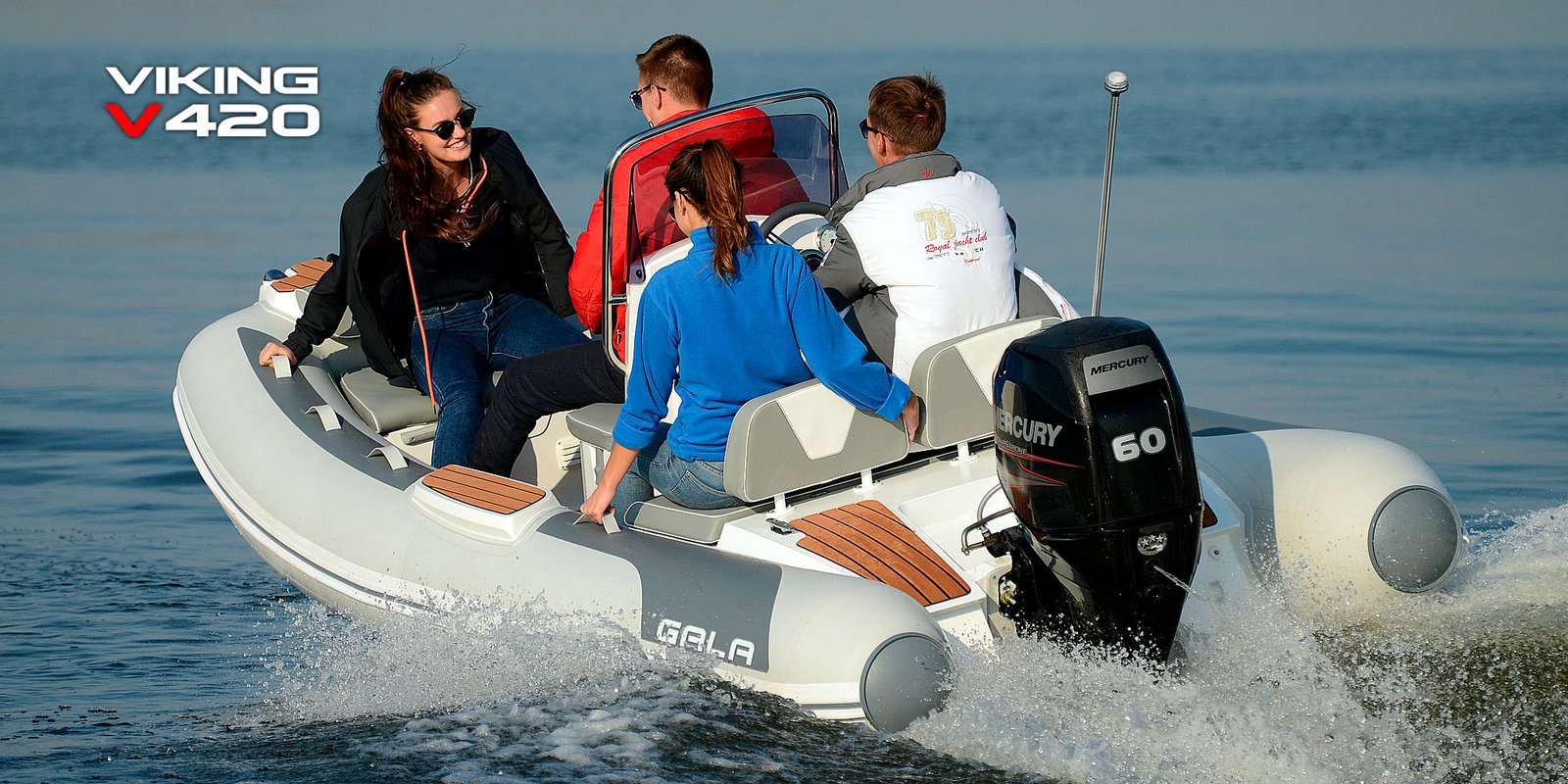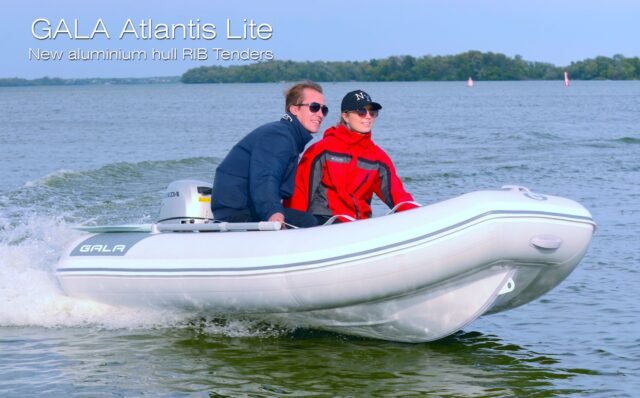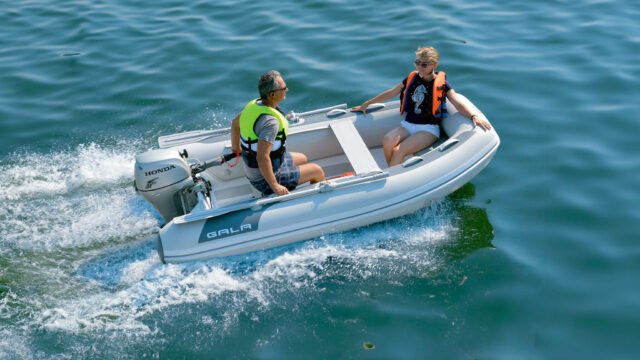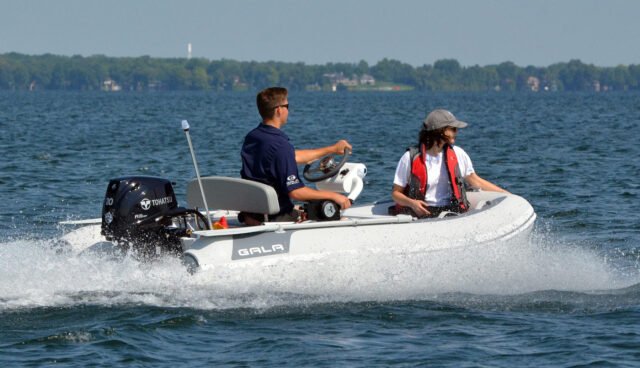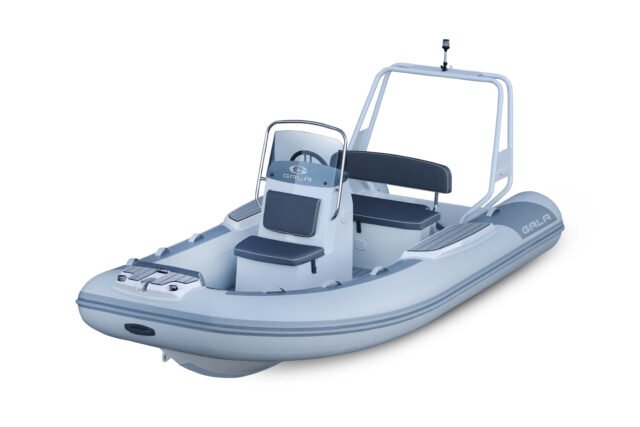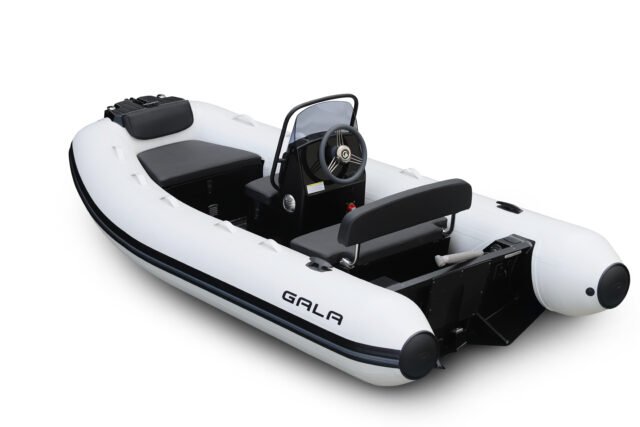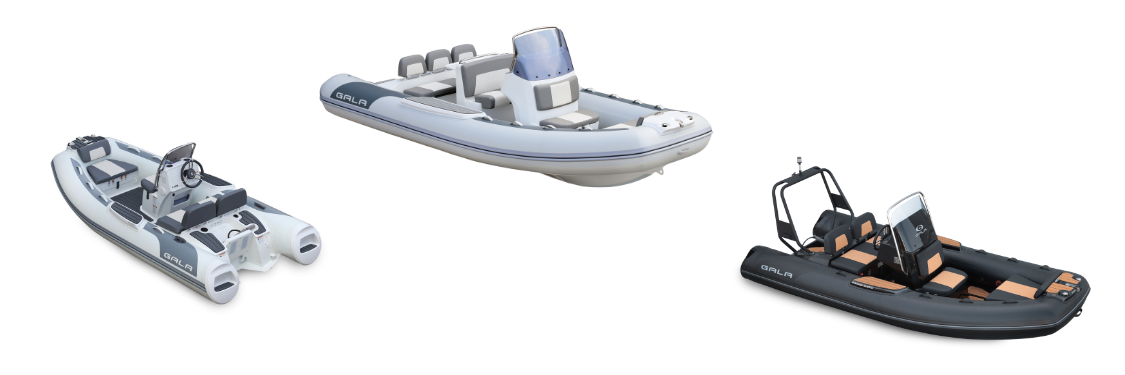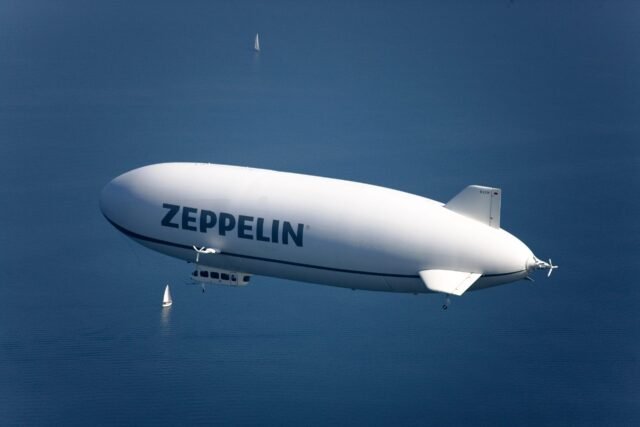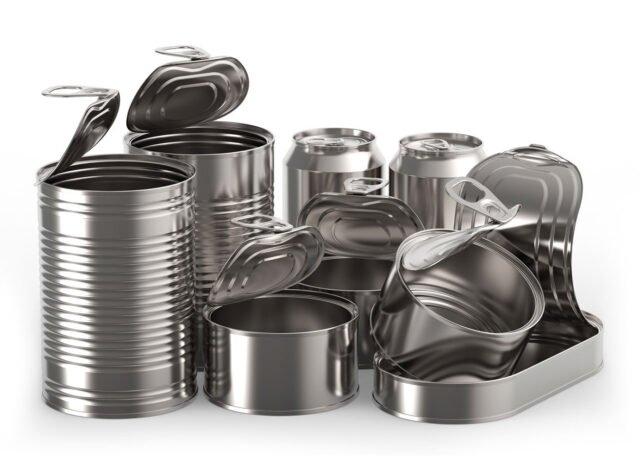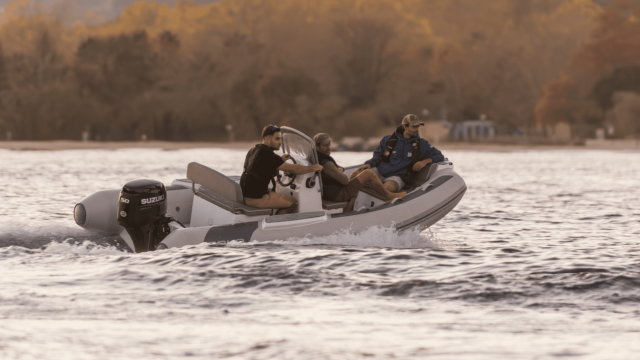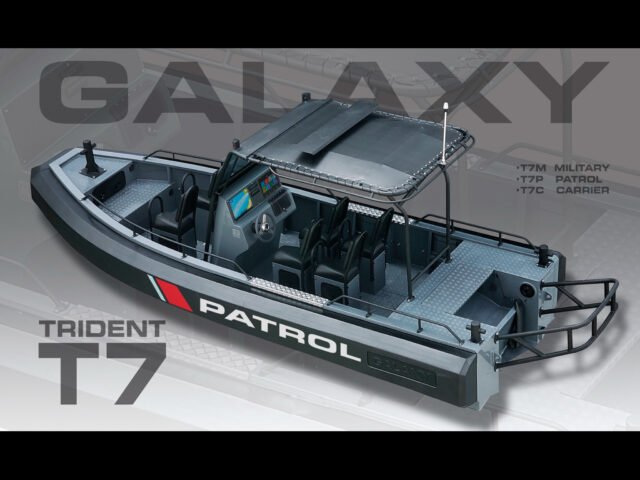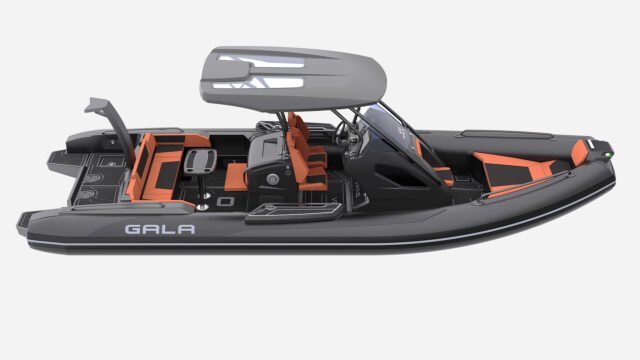Characteristics and primary producers of hybrid vessels combining rigid hulls and PVC construction materials.
Authors of the photos: Jan van der Wolf, Wikipedia, Pirelli, Tecnorib, Zodiac Nautic, Brig, Gelex Global Group, Williams, AB Inflatables, Castoldi, Technohull, SACS, Novamarine.
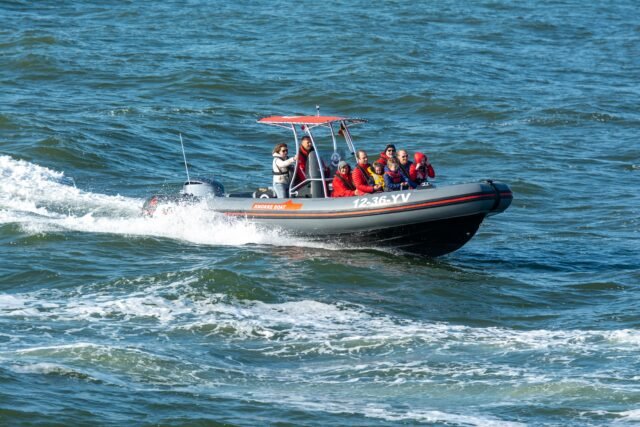
In the realm between traditional inflatable boats and rigid-hull vessels lies a unique hybrid known as rigid-inflatable boats (RIBs), or sometimes referred to as “rigid-modular” boats. These vessels, distinguished by the English abbreviation RIB (rigid inflatable boat) or RHIB (rigid-hulled inflatable boat), amalgamate the finest attributes of both counterparts. In this article, we delve into the genesis of RIBs, their distinguishing features, and avenues for acquiring such exceptional watercraft.
How did RIBs come about?
The inception of RIBs traces back to the late 1960s, originating in the maritime innovation hub of the United Kingdom. Developed at the behest of the nation’s Navy and subsequently embraced by the Royal National Lifeboat Institution, RIBs emerged as a testament to maritime engineering ingenuity. Though the founding patents eluded him, Tony Lee-Elliott, the visionary behind the Flatacraft shipyard, spearheaded the conceptualization of RIBs as early as 1965, laying the foundation for their future prominence.


Initially, RIBs manifested as either conventional vessels outfitted with rigid hulls complemented by inflatable tubes or inflatable crafts fortified with reinforced bottoms. Among the pioneers in serial production of RIBs, Avon Inflatables stands tall, paving the way for the proliferation of these innovative watercraft.
What are RIBs like today?
In contemporary times, the RIB landscape flourishes with an eclectic array of models from diverse manufacturers. Varying in size, configuration, and amenities, RIBs cater to a broad spectrum of preferences and budgets. The pinnacle of RIB opulence is epitomized by “super RIBs,” luxurious cabin cruisers exceeding 20 meters in length, heralding a new era of maritime indulgence.
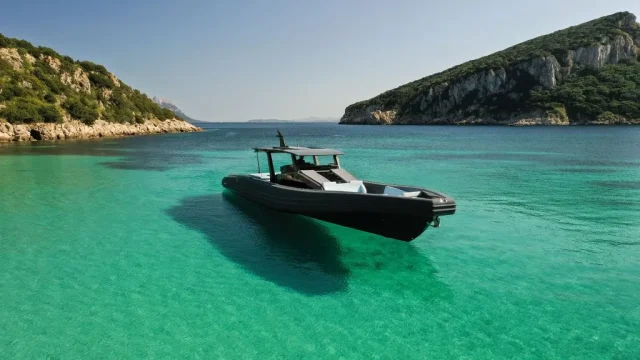
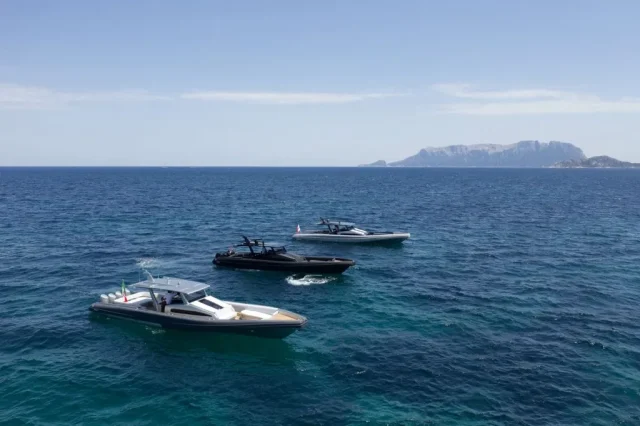
Celebrated for their unparalleled attributes, RIBs have garnered acclaim among military, special services, and aquatic aficionados alike. Modern RIB construction harnesses cutting-edge techniques such as vulcanization, gluing, and ultrasonic welding to seamlessly integrate rigid hulls crafted from plastic or aluminum with inflatable tubes, ensuring optimal durability and reliability.
The merits of RIBs are manifold, encompassing advantages associated with both the rigid hull and the inflatable tubes. The rigid hull confers benefits such as shallow draft, puncture resistance, and the potential for installing enclosed superstructures, facilitating high-speed performance and enhanced maneuverability. Meanwhile, inflatable tubes serve as buffers against wave impacts, ensuring safety in tumultuous seas, and augmenting the vessel’s load-bearing capacity.


While RIBs boast an array of advantages, they are not without their limitations. Some models may exhibit considerable weight, necessitating transport via trailer, and constraints in internal space. Nonetheless, the allure of RIBs transcends these drawbacks, making them an unparalleled choice for embarking on aquatic adventures of unparalleled splendor.
Who are the main RIB manufacturers?
Zodiac
This French shipyard is not only a leader in the RIB market but also one of the oldest players in this segment. In 2021, the company will celebrate its 125th anniversary. Although the firm initially did not specialize in boats, instead focusing on aircraft, the engineer of the company presented a unique “prototype” of modern Zodiac vessels back in the 1930s.
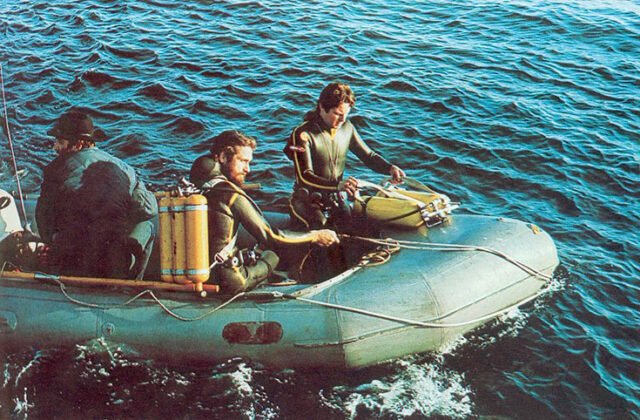
In the 1970s, Zodiac particularly favored Jacques-Yves Cousteau’s boats.
Today, Zodiac Nautic produces models ranging from 3.6 meters (4-seat Yachtline 360) to 8.5 meters (PRO 850, designed for 25 people). The shipyard offers boats for simple transfers of people and goods from yachts to shore, as well as for comfortable leisure on the water, fishing, and diving. Depending on the model, the base price of the boat ranges from €17.5 thousand to €64.6 thousand.

A standout model is the eJET 450.
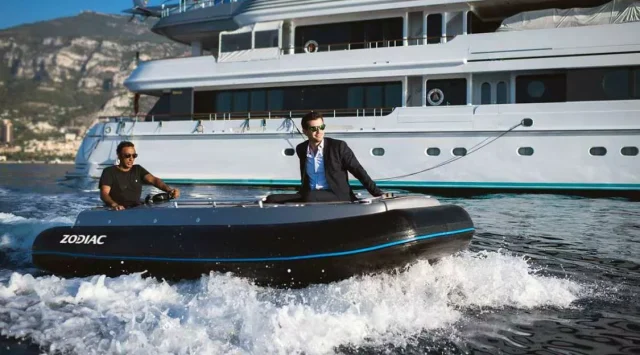
This 4.5-meter fully electric RIB is designed for seven passengers. At an average speed of 24 knots, the boat can autonomously operate for 1.5 hours.
If cruising at a leisurely 5 knots, the battery will last for 8 hours. The maximum speed achievable by the eJET 450 is 30 knots. The base price of the model is €125 thousand (including VAT). Zodiac takes pride in its automated thermowelding process and its patented super-strong material, Strongan Duotex, which surpasses PVC in strength.
Brig
The origins of the Ukrainian Shipyard Brig can be traced back to the aviation industry, similar to Zodiac’s trajectory. Vyacheslav Rodionov, the company’s founder, brought together a team of aviation engineers in Kharkiv who found themselves unemployed after the collapse of the USSR. Together, they ventured into the production of inflatable boats and RIBs. Over the course of 27 years, Brig has emerged as a prominent player in the global RIB manufacturing landscape.
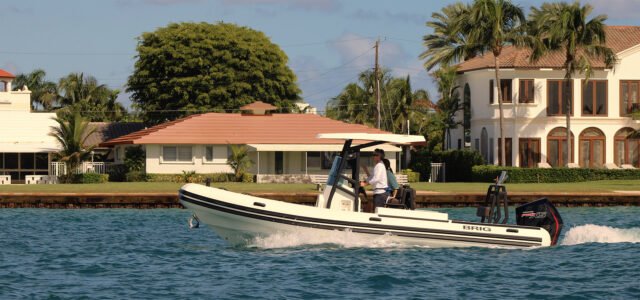
With a lineup of 22 models ranging from the compact 2.9-meter Falcon Tender 300 to the spacious 9.95-meter Eagle 10, capable of accommodating 12 passengers, Brig offers a diverse range of options. These models are categorized into four distinct lines, each offering unique features such as enhanced maneuverability, improved stability on rough waters to minimize splashing, and energy efficiency for economical fuel consumption during water sports activities. Prices vary depending on the model, starting from €10 thousand and reaching up to €200 thousand.
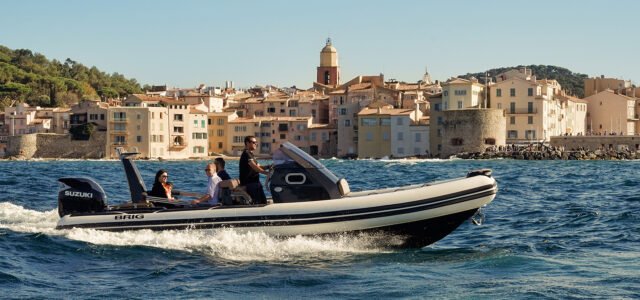
In 2020, Brig’s flagship vessel was nominated as a finalist for the Motor Boat Award but was ultimately surpassed by its younger sibling, the 7.9-meter Eagle 8.
Gala
Gala is a distinguished brand with Ukrainian origins, born from a collaboration between the esteemed Canadian company GRAND MARINE GROUP and the Ukrainian GELEX GLOBAL GROUP. While Gala’s journey commenced in 2014, a notable transformation occurred within the company in 2022. This transformation saw the integration of four distinct brands – GALA, GALAXY, GELEX, and RIVERDAY – into the GELEX GLOBAL GROUP, all while proudly upholding their Ukrainian heritage.
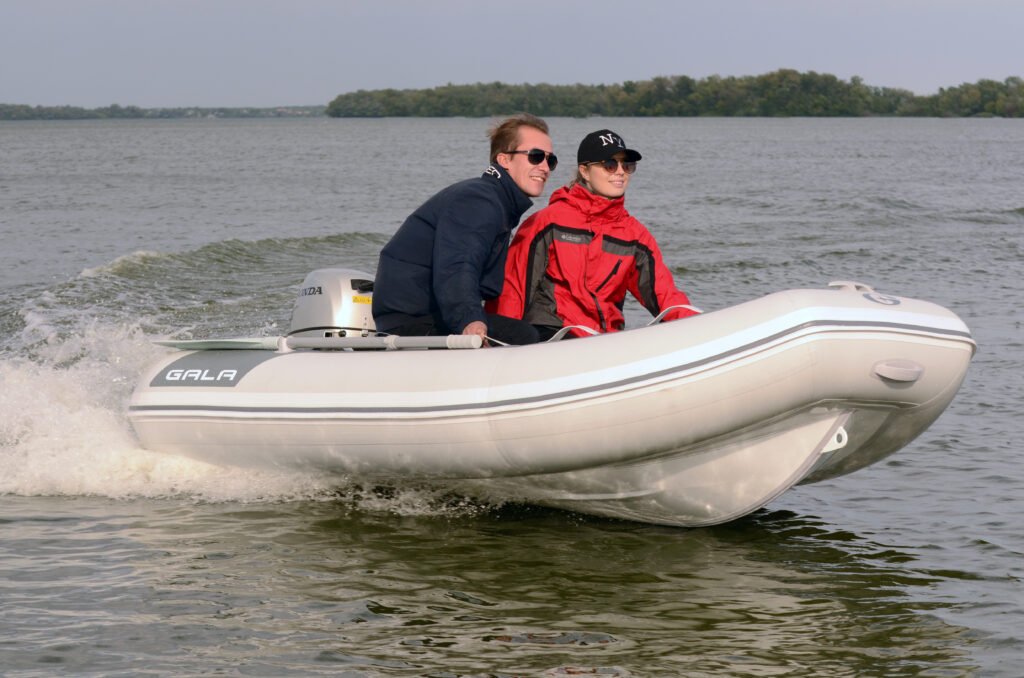
Gelex Global Group has emerged as a beacon of modernity, demonstrating precision and excellence across every stage of its production process. From their cutting-edge design office to their meticulous quality assurance department, and from their advanced rotational molding technology to their surface waterproofing division, innovation and sophistication permeate every aspect of their operations. Moreover, their commitment to excellence extends to safeguarding aluminum products from corrosion through a state-of-the-art passivation line.
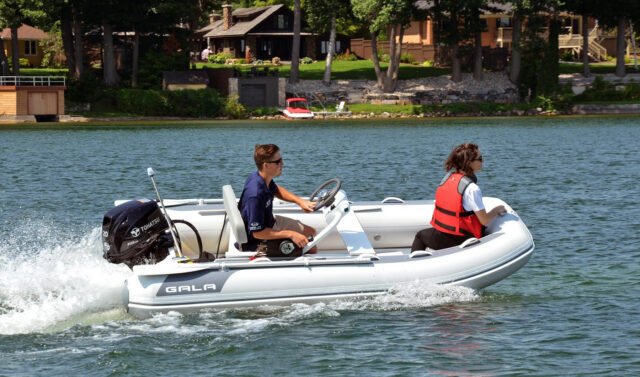
The primary focus lies in developing an enhanced line of inflatable boats featuring aluminum hulls and folding configurations. Since 2019, Gala has been unveiling an impressive range of GALAXY inflatable boats tailored for professional applications, including search and rescue, law enforcement, military, and diving operations. Offering a diverse array of Gala and Galaxy inflatable boats ranging from 2.1 to 8 meters in length, the company caters to various market segments.
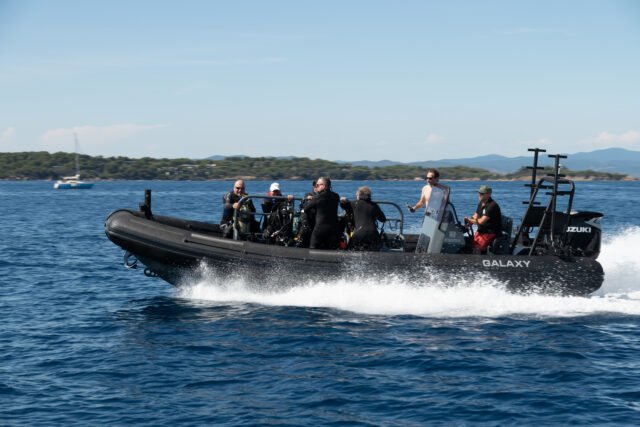
GALA’s inflatable boat collection offers a diverse range of models to suit various needs:
ATLANTIS Lite: Lightweight RIB tenders with aluminum hulls.
ATLANTIS Dual-deck: RIB tenders featuring dual decks and aluminum hulls.
ATLANTIS Aquahelm: Compact tenders with console steering and aluminum hulls.
ATLANTIS Deluxe: Premium RIB tenders with aluminum hulls, central consoles, and remote steering.
VIKING Tenders: High-quality aluminum RIB tenders.
VIKING Cruising: Top-tier aluminum cruising RIB boats.
Prices vary depending on the model: from 2,300 to 72,000 euros.
In addition, GALAXY offers a professional lineup including:
GALAXY PILOT: Professional-grade inflatable boats with traditional inflatable tubes.
GALAXY TRIDENT: High-caliber inflatable boats designed for professional applications, featuring D-shaped tubes with options for foam coating or inflatable floats.
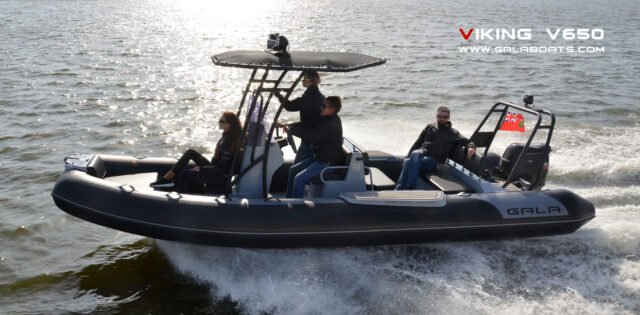
Williams
Since 2002, Williams has been a key player in the tender market, specializing in crafting RIB boats. Their extensive range comprises 14 models, spanning from the compact Minijet 280, measuring 2.79 meters, to the expansive Evojet 70, stretching 7 meters.
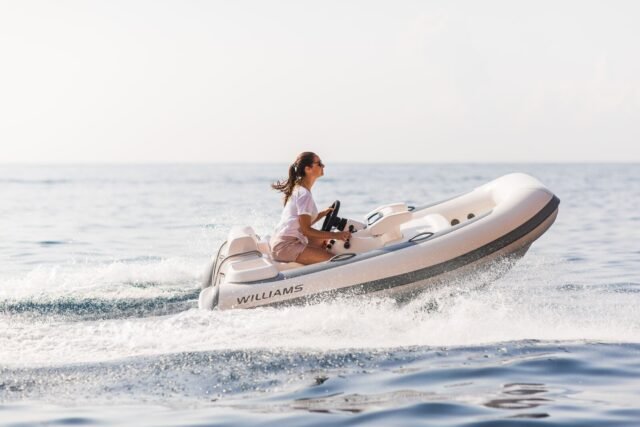
Designed to comfortably accommodate between 3 to 13 individuals, these boats are priced between €21 thousand to €208 thousand, VAT inclusive. Williams offers five distinct boat lines, catering to a spectrum of needs, from tendering to high-performance water sports vessels.
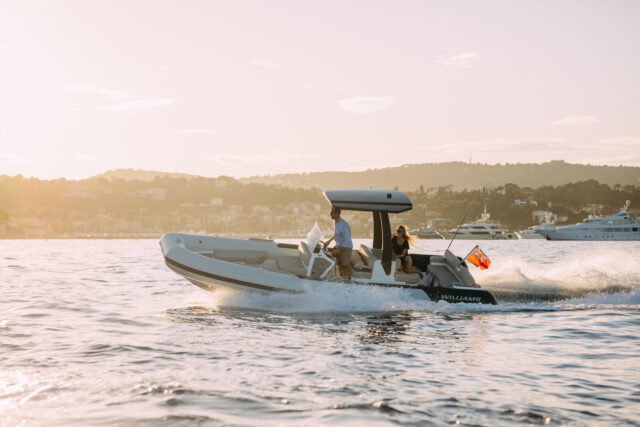
A notable feature of Williams is their user-friendly website, featuring an online configurator. Prospective buyers can seamlessly explore available options and tailor their preferences before finalizing a purchase.
AB Inflatables
Originating from Colombia, AB Inflatables is renowned for its versatile range of RIB boats suitable for leisure and professional purposes alike. Setting them apart is their production of aluminum RIB boats alongside the more common fiberglass models.

With a comprehensive lineup comprising 16 lines and 85 models, ranging from the compact Lammina 7.5 UL to the spacious Oceanus 28 VST, AB Inflatables offers boats accommodating between 3 to 25 individuals.
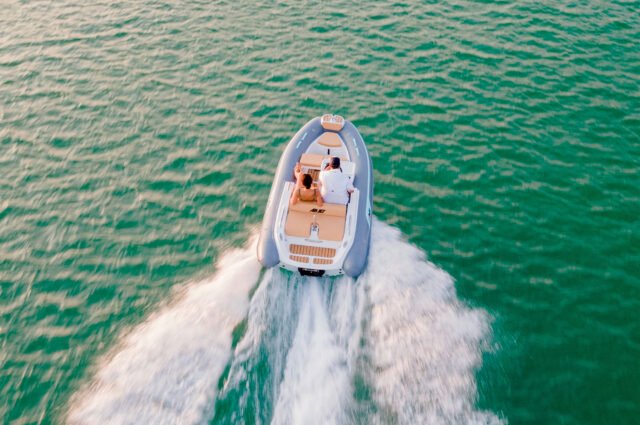
Base prices for these boats can peak at €117 thousand. Noteworthy is the significant portion of AB Inflatables’ RIB boats serving as rescue vessels and special service crafts, with offerings ranging from simple dinghies to boats ideal for leisurely day trips.
Castoldi
Boasting a heritage dating back to 1930, the Italian shipyard Castoldi specializes in crafting luxury RIB boats equipped with inboard engines.
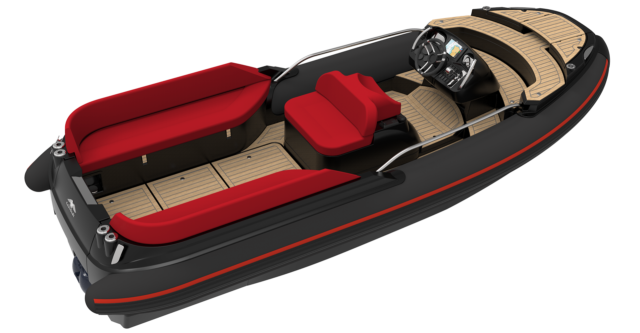
Their lineup of 11 models caters to diverse preferences, from the intimate 7-seater Jet Tender 14 to the capacious Jet Tender 27 designed for 16 individuals. Castoldi boats excel as tenders and towboats for water sports activities, offering a blend of comfort and functionality.
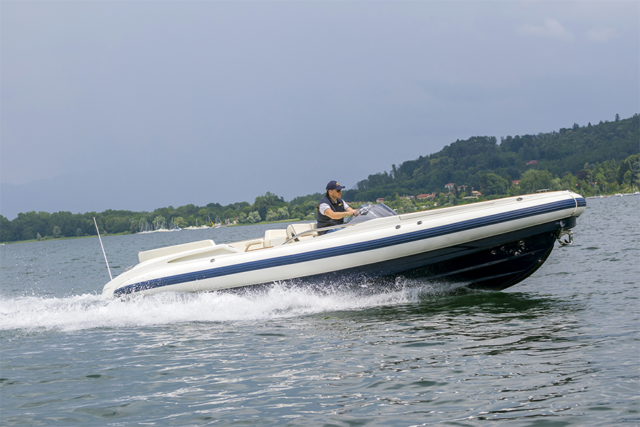
Additionally, certain models feature hard-hulled designs with minimal inflatable tubes, suitable for venturing into deeper waters. Notably, Castoldi produces models compliant with the International Convention for the Safety of Life at Sea (SOLAS), certifying their suitability for use as lifeboats.
Technohull
Distinguished for its focus on high-performance cabin RIBs, the Greek shipyard Technohull offers models ranging from 7.2 meters to 13.8 meters in length.
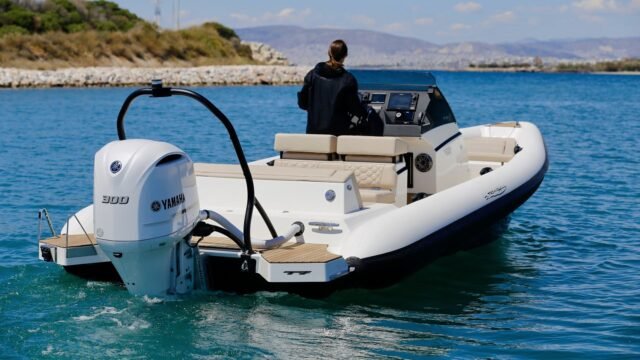
Their lineup of seven models delivers unparalleled speed and agility, with even the smallest model capable of reaching speeds of up to 56 knots.
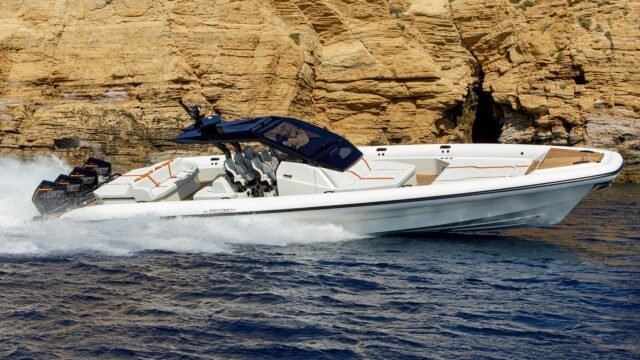
Maintaining impressive fuel efficiency at a consumption rate of only 0.8 liters per nautical mile, Technohull models can be priced up to €480 thousand. Like Williams, Technohull offers an online configurator on their website for effortless customization.
Tecnorib
As a subsidiary of renowned tire manufacturer Pirelli, Tecnorib adheres to the highest standards of quality and craftsmanship. Partnering with Novamarine and SACS, Tecnorib stands as a premier supplier of luxury cabin RIBs.

Their lineup of 18 models, categorized into four lines, caters to a broad spectrum of preferences and needs. From straightforward tenders to potent high-speed boats, Tecnorib offers versatility and performance.
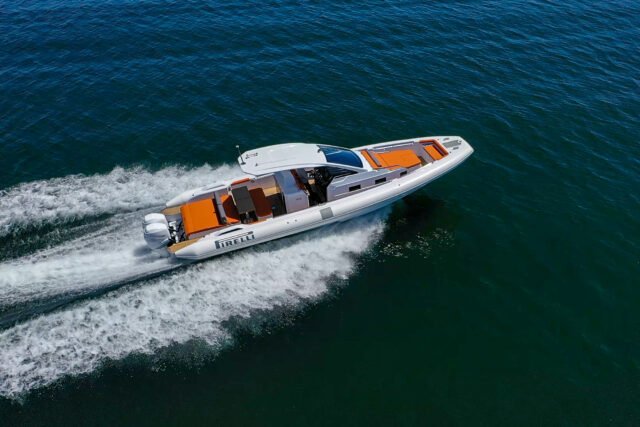
Notably, their models are replicated in a special version developed in collaboration with Azimut for Azimut yachts. With base prices exceeding €1 million for their largest and most opulent models, Tecnorib reflects an unwavering commitment to exceptional quality and luxury features.
SACS
The esteemed Italian shipyard SACS has a storied history in the contemporary RIB market, tracing its origins back to 1989. Presently, it boasts an eclectic portfolio comprising 11 models neatly divided into two distinct lines.
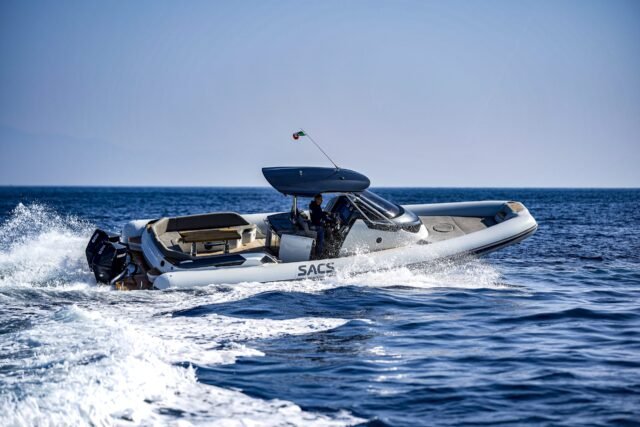
However, SACS goes beyond the ordinary with its offerings. A specialized division within the company is committed to delivering tailor-made customization services for boats, showcasing innovative features like hull extension, as exemplified by the remarkable Strider 20. Collaborating with esteemed automotive brands such as Ferrari, Jaguar, Abarth, and Lancia, many of these bespoke models redefine luxury on the water.
Standing out in SACS’s standard model range is the compact yet versatile Strider 700, measuring a mere 6.96 meters.
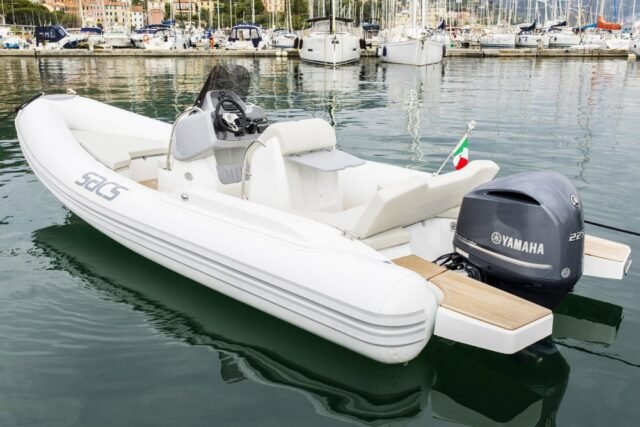
Despite its modest size, this RIB comfortably accommodates up to 16 individuals, demonstrating exceptional versatility. Leading the fleet is the Strider 19, an imposing vessel spanning 18.13 meters and designed to host up to 22 passengers. Notably, this flagship model outperforms even the Tecnorib Pirelli 1900 in acceleration, achieving speeds of up to 50 knots. SACS boats start at a base price of €83 thousand.
Novamarine
Another illustrious figure in Italian shipbuilding, Novamarine has been a pioneer in RIB manufacturing since the 1980s, contributing significantly to the evolution of these vessels. Today, the company distinguishes itself by categorizing 90% of its product lineup as a distinct class of vessels, as opposed to traditional RIBs, on its official website. This distinction stems from Novamarine’s innovative use of foam material blocks instead of conventional inflatable tubes, while visually, its models remain indistinguishable from other RIBs.

Novamarine’s offerings span three distinctive lines, comprising a total of 11 boats ranging from the nimble 8-meter RH800, capable of reaching speeds of up to 50 knots and accommodating 12 passengers, to the commanding 22-meter Black Shiver 220, capable of hosting up to 30 individuals. These vessels are meticulously crafted to cater to both leisure and semi-professional usage scenarios.
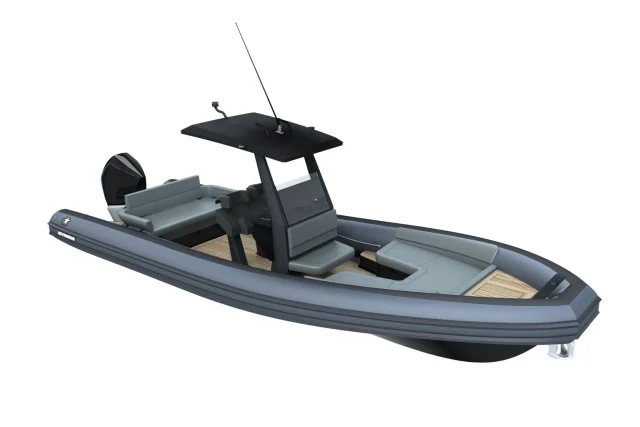
With prices starting at €2,5 million, Novamarine boats exemplify the epitome of luxury and performence in the industry.
Additionally, Novamarine operates a dedicated production line catering to the Defence series of RIBs, specifically engineered to meet the rigorous demands of military applications.
Let’s summarize.
The realm of rigid inflatable boats presents an extensive spectrum of options catering to a multitude of needs and preferences. Each shipyard, be it Williams, AB Inflatables, Gala, Technohull, SACS, or Novamarine, brings its distinct touch, offering a diverse lineup ranging from compact tenders to opulent high-speed crafts.
Williams distinguishes itself with its emphasis on lightweight construction and efficiency, while Gala pioneers an inventive approach to materials. Castoldi stands out for its focus on luxury and bespoke customization. Technohull and Tecnorib excel in prioritizing speed and performance, whereas Galaxy showcases technological advancement through the utilization of foam.
Irrespective of individual inclinations, the domain of rigid inflatable boats ensures the availability of an ideal vessel tailored to fulfill one’s desires, whether for leisurely pursuits or professional endeavors.

